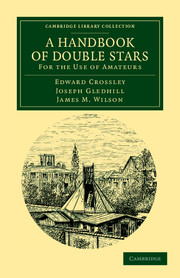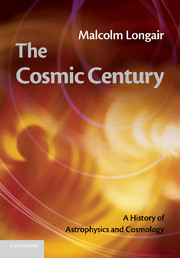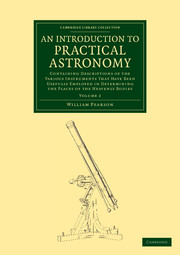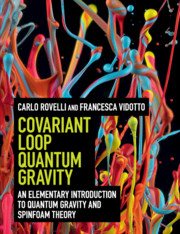Refine listing
Actions for selected content:
17000 results
3 - Physics of Complexity
-
- Book:
- An Introduction to Space Plasma Complexity
- Published online:
- 05 March 2015
- Print publication:
- 09 March 2015, pp 53-74
-
- Chapter
- Export citation
1 - Introduction
-
- Book:
- An Introduction to Space Plasma Complexity
- Published online:
- 05 March 2015
- Print publication:
- 09 March 2015, pp 1-15
-
- Chapter
- Export citation
Index
-
- Book:
- An Introduction to Space Plasma Complexity
- Published online:
- 05 March 2015
- Print publication:
- 09 March 2015, pp 157-160
-
- Chapter
- Export citation
Series page
-
- Book:
- An Introduction to Space Plasma Complexity
- Published online:
- 05 March 2015
- Print publication:
- 09 March 2015, pp iii-iv
-
- Chapter
- Export citation

An Introduction to Space Plasma Complexity
-
- Published online:
- 05 March 2015
- Print publication:
- 09 March 2015

The Observation and Analysis of Stellar Photospheres
-
- Published online:
- 05 March 2015
- Print publication:
- 17 November 2005
-
- Book
- Export citation

A Handbook of Double Stars
- For the Use of Amateurs
-
- Published online:
- 05 February 2015
- Print publication:
- 03 November 2011
- First published in:
- 1879

The Cosmic Century
- A History of Astrophysics and Cosmology
-
- Published online:
- 05 February 2015
- Print publication:
- 15 June 2006

An Introduction to Practical Astronomy
- Containing Descriptions of the Various Instruments that Have Been Usefully Employed in Determining the Places of the Heavenly Bodies
-
- Published online:
- 05 February 2015
- Print publication:
- 05 September 2013

Covariant Loop Quantum Gravity
- An Elementary Introduction to Quantum Gravity and Spinfoam Theory
-
- Published online:
- 05 February 2015
- Print publication:
- 13 November 2014
10 - Comets
-
- Book:
- Planetary Sciences
- Published online:
- 05 January 2015
- Print publication:
- 29 January 2015, pp 405-447
-
- Chapter
- Export citation
5 - Planetary Surfaces
-
- Book:
- Planetary Sciences
- Published online:
- 05 January 2015
- Print publication:
- 29 January 2015, pp 152-240
-
- Chapter
- Export citation
Preface
-
- Book:
- Planetary Sciences
- Published online:
- 05 January 2015
- Print publication:
- 29 January 2015, pp xiv-xvi
-
- Chapter
- Export citation
3 - Solar Heating and Energy Transport
-
- Book:
- Planetary Sciences
- Published online:
- 05 January 2015
- Print publication:
- 29 January 2015, pp 56-75
-
- Chapter
- Export citation
12 - Extrasolar Planets
-
- Book:
- Planetary Sciences
- Published online:
- 05 January 2015
- Print publication:
- 29 January 2015, pp 489-511
-
- Chapter
- Export citation
Frontmatter
-
- Book:
- Planetary Sciences
- Published online:
- 05 January 2015
- Print publication:
- 29 January 2015, pp i-iv
-
- Chapter
- Export citation
Plate Section
-
- Book:
- Planetary Sciences
- Published online:
- 05 January 2015
- Print publication:
- 29 January 2015, pp -
-
- Chapter
- Export citation
1 - Introduction
-
- Book:
- Planetary Sciences
- Published online:
- 05 January 2015
- Print publication:
- 29 January 2015, pp 1-21
-
- Chapter
- Export citation
13 - Planet Formation
-
- Book:
- Planetary Sciences
- Published online:
- 05 January 2015
- Print publication:
- 29 January 2015, pp 512-553
-
- Chapter
- Export citation
Appendix G - Recent Developments in Planetary Sciences
-
- Book:
- Planetary Sciences
- Published online:
- 05 January 2015
- Print publication:
- 29 January 2015, pp 581-604
-
- Chapter
- Export citation
